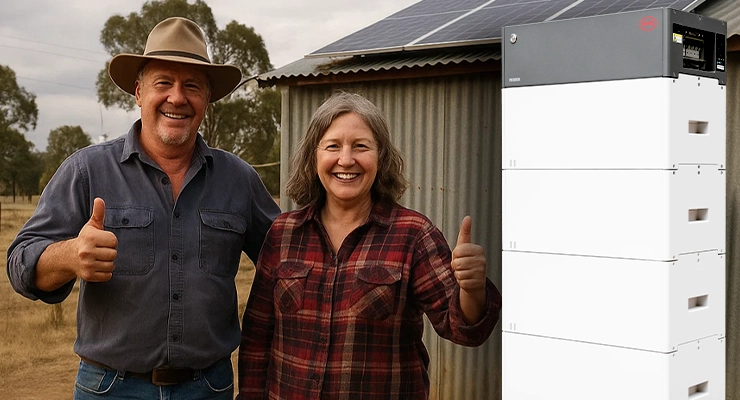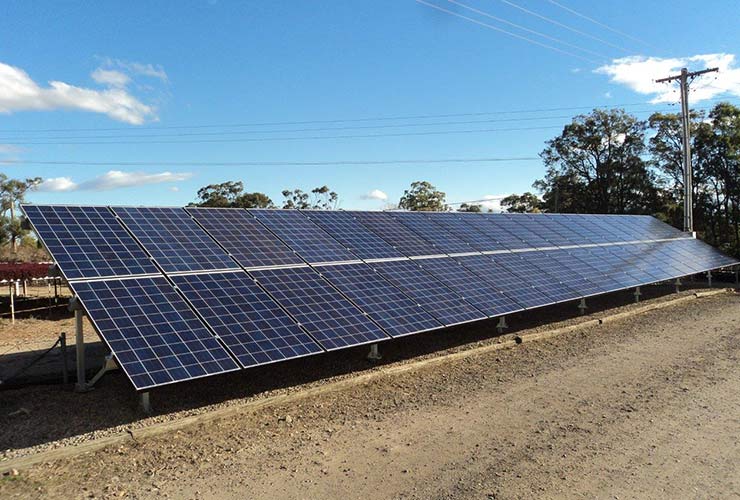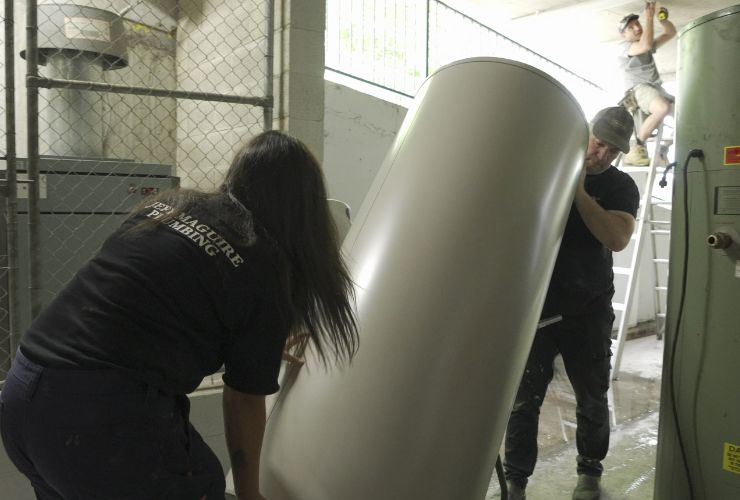Fast read
For regional and rural homes in Australia, the best solar battery setup prioritises blackout protection and energy independence. The choice is typically between a robust hybrid system, which stays connected to the grid for backup, or a fully self-sufficient off-grid system if the grid is unreliable or unavailable. Key features to look for are seamless backup power, durability for harsh conditions (IP65 rating), and sufficient capacity to run essential appliances like water pumps and refrigerators.
What’s the best solar battery setup for regional and rural homes?
Living in regional or rural Australia offers a lifestyle that’s hard to beat, but it often comes with the challenge of an unreliable power supply. Frequent blackouts, voltage fluctuations, and long-stretching power lines make energy security a major concern. A well-designed solar and battery system is no longer a luxury but a vital piece of infrastructure for achieving true energy independence and peace of mind.
This guide will walk you through the essential considerations for choosing the right solar battery setup, helping you move from energy uncertainty to confidence and control.
Why are energy needs different in regional Australia?
Properties outside of major urban centres face a unique set of energy challenges. The electricity grid can be less stable due to the long distances it has to cover, making it more susceptible to faults caused by storms, bushfires, or falling trees. This results in more frequent and often longer-lasting power outages.
Furthermore, rural properties often have higher energy demands. Electric water pumps, large sheds with power tools, and the lack of natural gas for heating and cooking mean that electricity is essential for daily life. When the grid goes down, it’s not just the lights that go out; it can affect your water supply, communication, and ability to run your property. This makes having a reliable backup power source absolutely critical.
What are my main setup options: hybrid or off-grid?
When it comes to a rural battery setup, you have two main pathways. The right one for you depends on your connection to the grid and your desire for independence.
Hybrid Systems: The best of both worlds
A hybrid system is connected to the electricity grid but also includes battery storage. This is the most common and practical solution for rural homes that have an existing grid connection.
During the day, your solar panels power your home, and any excess energy charges your battery. At night or on cloudy days, you draw power from your battery. If your battery runs low, you can still draw power from the grid as a final safety net. Crucially, during a blackout, a quality hybrid system will automatically switch over to your stored battery power, often so quickly you won’t even notice the grid is down. This process is sometimes called “islanding,” as your home operates as its own self-sufficient power island until the grid is restored.
Hybrid systems are built around a powerful hybrid inverter. Brands like Sungrow are well-regarded for producing robust hybrid inverters that can seamlessly manage power from your panels, battery, and the grid, and many now support off-grid operation with generator backup if needed.
Off-Grid Systems: Complete energy independence
An off-grid system, or Stand-Alone Power System (SAPS), has no connection to the main electricity grid. This is the ultimate solution for remote properties where a grid connection is either non-existent or prohibitively expensive to install.
With an off-grid setup, you are entirely responsible for generating, storing, and managing your own power. This requires a larger solar panel array and a bigger battery bank to ensure you have enough energy to get through several overcast days. It is a significant investment that demands meticulous planning and high-quality, durable components.
Key features to look for in a rural-ready battery
Not all batteries are created equal, especially when it comes to the demands of a rural property. Here are the non-negotiable features to look for:
- Seamless and powerful backup: The switch from grid power to battery power during an outage should be automatic and virtually instantaneous. A good system will switch in under 20 milliseconds, while some of the latest inverters can do so in under 10 milliseconds. Some premium systems can achieve a 0-millisecond switchover, which is true uninterruptible power. The battery must also have a high enough power output (measured in kilowatts, kW) to start and run essential, power-hungry appliances like bore pumps, large fridges, and air conditioners simultaneously.
- Sufficient capacity: Battery capacity (measured in kilowatt-hours, kWh) determines how long you can run your appliances. Don’t just plan for getting through the night; a good rural system should have enough storage to last through at least one or two cloudy days. Modular systems are an excellent choice, as they allow you to add more capacity later. A system like the Sigenergy SigenStor, for example, is modular, allowing you to stack battery units to increase your total storage from 8 kWh to 48 kWh as your needs grow.
- Durability and weather resistance: Your battery will likely be installed in a shed or on an external wall, where it could be exposed to dust, moisture, and extreme temperatures. Look for a high Ingress Protection (IP) rating, with IP65 or higher being the standard for outdoor-rated durability.
- Black start capability: This is a critical feature, particularly for off-grid systems. A “black start” means the inverter can restart the entire solar system using only power from the battery after a complete shutdown (e.g., if the battery has been fully depleted). Without this, you might need a generator to get things going again.
How do I correctly size my solar and battery system?
Correctly sizing your system is the single most important step to ensuring it meets your expectations. Undersizing is a common and costly mistake, leaving you without power when you need it most.
Sizing involves more than just looking at your last power bill. A professional installer will analyse your daily energy consumption patterns, identify your “essential loads” (the appliances you absolutely must run during a blackout), and discuss your future energy needs, such as adding an EV charger or a heat pump.
For rural properties, it’s crucial to factor in the peak power draw of equipment like pumps, which can require a large surge of energy to start. An experienced installer will use this detailed analysis to recommend the optimal number of solar panels and the right battery capacity and power output for your specific situation.
Common pitfalls to avoid
- Choosing the cheapest quote: Reliability is paramount in a rural setting. Opting for the lowest-priced components or an inexperienced installer often leads to poor performance, system failures, and a lack of support when things go wrong.
- Forgetting about the installer: The best system in the world will fail if installed incorrectly. Always use an installer accredited by Solar Accreditation Australia (SAA), which is the current body responsible for ensuring national standards. The scheme fully transitioned to SAA from the Clean Energy Council (CEC) in May 2024, so don’t be concerned if a highly experienced installer also refers to their long-standing “CEC Accreditation”. The key is ensuring they hold the current SAA credentials.
- Ignoring the warranty and support: Check the warranty details for all components and, just as importantly, find out what level of after-sales support the installer provides. If you have an issue, you want a local team that can respond in a timely manner. Brands like Tesla and Sungrow have a strong Australian presence and are known for good installer support.
Your path to energy independence
Choosing the right solar and battery setup is a significant decision, but for a regional or rural property, it’s one of the best investments you can make in your security and comfort. By focusing on a high-quality hybrid or off-grid system with robust features and prioritising an expert installer, you can build a reliable, long-lasting energy solution tailored to your needs.
If you are ready to take the next step and explore specific options for your property, Your Energy Answers provides a free service connecting you with a network of vetted, SAA-accredited installers who specialise in rural and regional projects across Australia.





